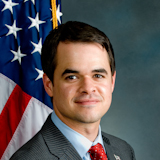LBD05810-01-9
S. 1591 2
§ 125. Motor vehicles. Every vehicle operated or driven upon a public
highway which is propelled by any power other than muscular power,
except (a) electrically-driven mobility assistance devices operated or
driven by a person with a disability, (a-1) electric personal assistive
mobility devices operated outside a city with a population of one
million or more, (b) vehicles which run only upon rails or tracks, (c)
snowmobiles as defined in article forty-seven of this chapter, [and] (d)
all terrain vehicles as defined in article forty-eight-B of this
chapter, AND (E) ELECTRIC ASSISTED BICYCLES AS DEFINED IN SECTION ONE
HUNDRED TWO-C OF THIS ARTICLE. For the purposes of title four of this
chapter, the term motor vehicle shall exclude fire and police vehicles
other than ambulances. For the purposes of titles four and five of this
chapter the term motor vehicles shall exclude farm type tractors and all
terrain type vehicles used exclusively for agricultural purposes, or for
snow plowing, other than for hire, farm equipment, including self-pro-
pelled machines used exclusively in growing, harvesting or handling farm
produce, and self-propelled caterpillar or crawler-type equipment while
being operated on the contract site.
§ 4. Section 159 of the vehicle and traffic law is amended to read as
follows:
§ 159. Vehicle. Every device in, upon, or by which any person or prop-
erty is or may be transported or drawn upon a highway, except devices
moved by human power or used exclusively upon stationary rails or tracks
AND ELECTRIC ASSISTED BICYCLES AS DEFINED IN SECTION ONE HUNDRED TWO-C
OF THIS ARTICLE.
§ 5. Section 1230 of the vehicle and traffic law, subdivision (b) as
amended by chapter 694 of the laws of 1995, is amended to read as
follows:
§ 1230. Effect of regulations. (a) The parent of any child and the
guardian of any ward shall not authorize or knowingly permit any such
child or ward to violate any of the provisions of this article.
(b) These regulations applicable to bicycles, ELECTRIC ASSISTED BICY-
CLES, or to in-line skates shall apply whenever a bicycle OR ELECTRIC
ASSISTED BICYCLE is, or in-line skates are, operated upon any highway,
upon private roads open to public motor vehicle traffic and upon any
path set aside for the exclusive use of bicycles, ELECTRIC ASSISTED
BICYCLES, or in-line skates, or [both] ALL.
§ 6. Section 1231 of the vehicle and traffic law, as amended by chap-
ter 694 of the laws of 1995, is amended to read as follows:
§ 1231. Traffic laws apply to persons riding bicycles OR ELECTRIC
ASSISTED BICYCLES or skating or gliding on in-line skates. Every person
riding a bicycle OR ELECTRIC ASSISTED BICYCLE or skating or gliding on
in-line skates upon a roadway shall be granted all of the rights and
shall be subject to all of the duties applicable to the driver of a
vehicle by this title, except as to special regulations in this article
and except as to those provisions of this title which by their nature
can have no application.
§ 7. Section 1232 of the vehicle and traffic law is amended to read as
follows:
§ 1232. Riding on bicycles AND ELECTRIC ASSISTED BICYCLES. (a) A
person propelling a bicycle OR ELECTRIC ASSISTED BICYCLE shall not ride
other than upon or astride a permanent and regular seat attached there-
to, nor shall he ride with his feet removed from the pedals.
(b) No bicycle OR ELECTRIC ASSISTED BICYCLE shall be used to carry
more persons at one time than the number for which it is designed and
equipped.
S. 1591 3
§ 8. The vehicle and traffic law is amended by adding a new section
1232-a to read as follows:
§ 1232-A. ADDITIONAL REQUIREMENTS FOR OPERATING AN ELECTRIC ASSISTED
BICYCLE. (A) NO PERSON SHALL OPERATE OR PARK AN ELECTRIC ASSISTED BICY-
CLE ON ANY PUBLIC HIGHWAY OR STREET IN THIS STATE UNLESS A LEGIBLE LABEL
IS PERMANENTLY AFFIXED BY THE BICYCLE OR PEDAL ASSISTED MOTOR MANUFAC-
TURER, IN A PROMINENT LOCATION, ON SUCH PERSON'S ELECTRIC ASSISTED BICY-
CLE. SUCH LABEL SHALL CONTAIN THE MAXIMUM SPEED, AND MOTOR WATTAGE OF
THE ELECTRIC ASSISTED BICYCLE, AND SHALL BE PRINTED IN ARIAL FONT IN AT
LEAST NINE-POINT TYPE. ON AND AFTER JANUARY FIRST, TWO THOUSAND TWEN-
TY-ONE, MANUFACTURERS AND DISTRIBUTORS OF ELECTRIC ASSISTED BICYCLES
SHALL APPLY A LABEL THAT IS PERMANENTLY AFFIXED, IN A PROMINENT
LOCATION, TO EACH ELECTRIC ASSISTED BICYCLE. THE LABEL SHALL CONTAIN THE
TOP ASSISTED SPEED, AND MOTOR WATTAGE OF ELECTRIC ASSISTED BICYCLE, AND
SHALL BE PRINTED IN ARIAL FONT IN AT LEAST NINE-POINT TYPE.
(B) NO PERSON SHALL PERMIT ANY LABEL REQUIRED BY SUBDIVISION (A) OF
THIS SECTION TO BE AFFIXED TO AN ELECTRIC ASSISTED BICYCLE TO BECOME
ILLEGIBLE.
(C) NO PERSON OR ENTITY SHALL PARK OR OTHERWISE MAKE AVAILABLE ANY
ELECTRIC ASSISTED BICYCLE FOR USE OR OPERATION BY ANOTHER ON ANY PUBLIC
HIGHWAY OR STREET IN THE STATE UNLESS A LEGIBLE LABEL IS PERMANENTLY
AFFIXED IN A MANNER WHICH MEETS THE REQUIREMENTS OF PARAGRAPH (A) OF
THIS SECTION.
(D) THE COURT SHALL WAIVE ANY FINE FOR WHICH A PERSON WHO VIOLATES THE
PROVISIONS OF PARAGRAPH (A) OF THIS SECTION IS LIABLE IF SUCH PERSON
SUPPLIES THE COURT WITH (1) PROOF THAT BETWEEN THE DATE OF VIOLATION AND
THE APPEARANCE DATE FOR SUCH VIOLATION, SUCH LABEL WAS REPAIRED OR
REPLACED IN A MANNER WHICH MEETS THE REQUIREMENTS OF PARAGRAPH (A) OF
THIS SECTION; OR (2) PROOF THAT SUCH ELECTRIC ASSISTED BICYCLE HAD BEEN
OPERATED IN VIOLATION OF THIS SECTION WITHIN THE DURATION OF A SHORT
TERM LEASE OR OTHER AGREEMENT.
(E) EVERY MANUFACTURER OF AN ELECTRIC ASSISTED BICYCLE SHALL CERTIFY,
AT A MINIMUM, THAT IT COMPLIES WITH THE EQUIPMENT AND MANUFACTURING
REQUIREMENTS FOR BICYCLES ADOPTED BY THE UNITED STATES CONSUMER PRODUCT
SAFETY COMMISSION (16 C.F.R. 1512.1, ET SEQ.).
§ 9. Subdivision 1 of section 1233 of the vehicle and traffic law, as
amended by chapter 703 of the laws of 2004, is amended to read as
follows:
1. No person riding upon any bicycle, ELECTRIC ASSISTED BICYCLE,
coaster, in-line skates, roller skates, skate board, sled, or toy vehi-
cle shall attach the same or himself or herself to any vehicle being
operated upon a roadway.
§ 10. Section 1234 of the vehicle and traffic law, as amended by chap-
ter 16 of the laws of 1996, is amended to read as follows:
§ 1234. Riding on roadways, shoulders, bicycle, ELECTRIC ASSISTED
BICYCLE or in-line skate lanes and bicycle or in-line skate paths. (a)
Upon all roadways, any bicycle, ELECTRIC ASSISTED BICYCLE or in-line
skate shall be driven either on a usable bicycle or in-line skate lane
or, if a usable bicycle or in-line skate lane has not been provided,
near the right-hand curb or edge of the roadway or upon a usable right-
hand shoulder in such a manner as to prevent undue interference with the
flow of traffic except when preparing for a left turn or when reasonably
necessary to avoid conditions that would make it unsafe to continue
along near the right-hand curb or edge. Conditions to be taken into
consideration include, but are not limited to, fixed or moving objects,
vehicles, bicycles, ELECTRIC ASSISTED BICYCLES, in-line skates, pedes-
S. 1591 4
trians, animals, surface hazards or traffic lanes too narrow for a bicy-
cle, OR ELECTRIC ASSISTED BICYCLE or person on in-line skates and a
vehicle to travel safely side-by-side within the lane.
(b) Persons riding bicycles OR ELECTRIC ASSISTED BICYCLES or skating
or gliding on in-line skates upon a roadway shall not ride more than two
abreast. Persons riding bicycles OR ELECTRIC ASSISTED BICYCLES or skat-
ing or gliding on in-line skates upon a shoulder, bicycle or in-line
skate lane, or bicycle or in-line skates path, intended for the use of
bicycles or in-line skates may ride two or more abreast if sufficient
space is available, except that when passing a vehicle, bicycle, ELEC-
TRIC ASSISTED BICYCLE or person on in-line skates, or pedestrian, stand-
ing or proceeding along such shoulder, lane or path, persons riding
bicycles OR ELECTRIC ASSISTED BICYCLES or skating or gliding on in-line
skates shall ride, skate, or glide single file. Persons riding bicycles
OR ELECTRIC ASSISTED BICYCLES or skating or gliding on in-line skates
upon a roadway shall ride, skate, or glide single file when being over-
taken by a vehicle.
(c) Any person operating a bicycle OR ELECTRIC ASSISTED BICYCLE or
skating or gliding on in-line skates who is entering the roadway from a
private road, driveway, alley or over a curb shall come to a full stop
before entering the roadway.
§ 11. Section 1235 of the vehicle and traffic law, as amended by chap-
ter 703 of the laws of 2004, is amended to read as follows:
§ 1235. Carrying articles. No person operating a bicycle OR ELECTRIC
ASSISTED BICYCLE shall carry any package, bundle, or article which
prevents the driver from keeping at least one hand upon the handle bars.
No person skating or gliding on in-line skates shall carry any package,
bundle, or article which obstructs his or her vision in any direction.
No person operating a skate board shall carry any package, bundle, or
article which obstructs his or her vision in any direction.
§ 12. Section 1236 of the vehicle and traffic law, subdivision (a) as
amended by chapter 16 of the laws of 2009 and subdivisions (d) and (e)
as added by chapter 887 of the laws of 1976, is amended to read as
follows:
§ 1236. Lamps and other equipment on bicycles AND ELECTRIC ASSISTED
BICYCLES. (a) Every bicycle OR ELECTRIC ASSISTED BICYCLE when in use
during the period from one-half hour after sunset to one-half hour
before sunrise shall be equipped with a lamp on the front which shall
emit a white light visible during hours of darkness from a distance of
at least five hundred feet to the front and with a red or amber light
visible to the rear for three hundred feet. Effective July first, nine-
teen hundred seventy-six, at least one of these lights shall be visible
for two hundred feet from each side.
(b) No person shall operate a bicycle OR ELECTRIC ASSISTED BICYCLE
unless it is equipped with a bell or other device capable of giving a
signal audible for a distance of at least one hundred feet, except that
a bicycle OR ELECTRIC ASSISTED BICYCLE shall not be equipped with nor
shall any person use upon a bicycle OR ELECTRIC ASSISTED BICYCLE any
siren or whistle.
(c) Every bicycle OR ELECTRIC ASSISTED BICYCLE shall be equipped with
a brake which will enable the operator to make the braked wheels skid on
dry, level, clean pavement, PROVIDED, HOWEVER, SUCH BRAKE OF AN ELECTRIC
ASSISTED BICYCLE SHALL ALSO OPERATE IN A MANNER SO THAT THE ELECTRIC
MOTOR IS DISENGAGED OR CEASES TO FUNCTION WHEN THE BRAKE IS APPLIED.
(d) Every new bicycle OR ELECTRIC ASSISTED BICYCLE shall be equipped
with reflective tires or, alternately, a reflex reflector mounted on the
S. 1591 5
spokes of each wheel, said tires and reflectors to be of types approved
by the commissioner. The reflex reflector mounted on the front wheel
shall be colorless or amber, and the reflex reflector mounted on the
rear wheel shall be colorless or red.
(e) Every bicycle OR ELECTRIC ASSISTED BICYCLE when in use during the
period from one-half hour after sunset to one-half hour before sunrise
shall be equipped with reflective devices or material meeting the stand-
ards established by rules and regulations promulgated by the commission-
er; provided, however, that such standards shall not be inconsistent
with or otherwise conflict with the requirements of subdivisions (a) and
(d) of this section.
§ 13. Section 1238 of the vehicle and traffic law, as amended by chap-
ter 267 of the laws of 1993, paragraph (a) of subdivision 2 and para-
graphs (a) and (b) of subdivision 5 as amended by chapter 457 of the
laws of 1999, subdivisions 2-a, 5-a, 9 and 10 and paragraph (c) of
subdivision 6 as amended by chapter 703 of the laws of 2004, subdivision
5 as amended by chapter 132 of the laws of 1994, subdivision 5-b as
added and paragraph (a) of subdivision 6 as amended by chapter 402 of
the laws of 2001 and subdivision 8 as amended by chapter 694 of the laws
of 1995, is amended to read as follows:
§ 1238. Passengers on bicycles OR ELECTRIC ASSISTED BICYCLES under one
year of age prohibited; passengers and operators under fourteen years of
age to wear protective headgear. 1. No person operating a bicycle OR
ELECTRIC ASSISTED BICYCLE shall allow a person who is under one year of
age to ride as a passenger on a bicycle OR ELECTRIC ASSISTED BICYCLE nor
shall such person be carried in a pack fastened to the operator. A first
violation of the provisions of this subdivision shall result in no fine.
A second violation shall result in a civil fine not to exceed fifty
dollars.
2. No person operating a bicycle OR ELECTRIC ASSISTED BICYCLE shall
allow a person one or more years of age and less than five years of age
to ride as a passenger on a bicycle OR ELECTRIC ASSISTED BICYCLE unless:
(a) such passenger is wearing a helmet meeting standards established
by the commissioner. For the purposes of this subdivision wearing a
helmet means having a helmet of good fit fastened securely upon the head
with the helmet straps; and
(b) such passenger is placed in a separate seat attached to the bicy-
cle OR ELECTRIC ASSISTED BICYCLE and such seat shall have adequate
provision for retaining the passenger in place and for protecting the
passenger from the moving parts of the bicycle OR ELECTRIC ASSISTED
BICYCLE.
2-a. The commissioner shall promulgate rules and regulations estab-
lishing standards for helmets required to be worn while bicycling,
in-line skating, or operating a skate board. Such standards, to the
extent practicable, shall reflect the standards recommended by the Snell
Memorial Foundation, Safety Equipment Institute, or United States
Consumer Product Safety Commission.
3. Any person who violates the provisions of subdivision two of this
section shall pay a civil fine not to exceed fifty dollars.
4. The court shall waive any fine for which a person who violates the
provisions of paragraph (a) of subdivision two of this section would be
liable if such person supplies the court with proof that between the
date of violation and the appearance date for such violation such person
purchased or rented a helmet, which meets the requirements of paragraph
(a) of subdivision two of this section. Further, the court shall waive
any fine for which a person who violates the provisions of paragraph (b)
S. 1591 6
of subdivision two of this section would be liable if such person
supplies the court with proof that between the date of violation and the
appearance date for such violation such person purchased or rented a
seat which meets the requirements of paragraph (b) of subdivision two of
this section. The court may waive any fine for which a person who
violates the provisions of subdivision two of this section would be
liable if the court finds that due to reasons of economic hardship such
person was unable to purchase a helmet or seat. Such waiver of fine
shall not apply to a second or subsequent conviction under paragraph (a)
or (b) of subdivision two of this section.
5. (a) No person operating a bicycle OR ELECTRIC ASSISTED BICYCLE
shall allow a person five or more years of age and less than fourteen
years of age to ride as a passenger on a bicycle OR ELECTRIC ASSISTED
BICYCLE unless such passenger is wearing a helmet meeting standards
established by the commissioner.
(b) No person, one or more years of age and less than fourteen years
of age, shall operate a bicycle OR ELECTRIC ASSISTED BICYCLE unless such
person is wearing a helmet meeting standards established by the commis-
sioner.
(c) For the purposes of this subdivision wearing a helmet means having
a helmet of good fit fastened securely upon the head with the helmet
straps.
5-a. No person, one or more years of age and less than fourteen years
of age, shall skate or glide on in-line skates or a skate board unless
such person is wearing a helmet meeting standards established by the
commissioner. For the purposes of this subdivision, wearing a helmet
means having a helmet of good fit fastened securely on the head of such
wearer with the helmet straps securely fastened.
5-b. No person less than fourteen years of age shall ride upon, propel
or otherwise operate a two-wheeled vehicle commonly called a scooter
unless such person is wearing a helmet meeting standards established by
the commissioner. As used in this subdivision, wearing a helmet means
having a properly fitting helmet fixed securely on the head of such
wearer with the helmet straps securely fastened.
6. (a) Any person who violates the provisions of subdivision five,
five-a or five-b of this section shall pay a civil fine not to exceed
fifty dollars.
(b) The court shall waive any fine for which a person who violates the
provisions of subdivision five of this section would be liable if such
person supplies the court with proof that between the date of violation
and the appearance date for such violation such person purchased or
rented a helmet.
(c) The court may waive any fine for which a person who violates the
provisions of subdivision five, five-a, or five-b of this section would
be liable if the court finds that due to reasons of economic hardship
such person was unable to purchase a helmet or due to such economic
hardship such person was unable to obtain a helmet from the statewide
in-line skate and bicycle helmet distribution program, as established in
section two hundred six of the public health law, or a local distrib-
ution program.
7. The failure of any person to comply with the provisions of this
section shall not constitute contributory negligence or assumption of
risk, and shall not in any way bar, preclude or foreclose an action for
personal injury or wrongful death by or on behalf of such person, nor in
any way diminish or reduce the damages recoverable in any such action.
S. 1591 7
8. A police officer shall only issue a summons for a violation of
subdivision two, five, or five-a of this section by a person less than
fourteen years of age to the parent or guardian of such person if the
violation by such person occurs in the presence of such person's parent
or guardian and where such parent or guardian is eighteen years of age
or more. Such summons shall only be issued to such parent or guardian,
and shall not be issued to the person less than fourteen years of age.
9. Subdivisions five, five-a, five-b, and six of this section shall
not be applicable to any county, city, town or village that has enacted
a local law or ordinance prior to the effective date of this subdivision
that prohibits a person who is one or more years of age and less than
fourteen years of age from operating a bicycle, ELECTRIC ASSISTED BICY-
CLE or skating or gliding on in-line skates or a skate board without
wearing a bicycle helmet meeting the standards of the American National
Standards Institute (Ansi Z 90.4 bicycle helmet standards), the Snell
Memorial Foundation's Standards for Protective Headgear for use in Bicy-
cling, or the American Society of Testing and Materials (ASTM) bike
helmet standards, or that prohibits a person operating a bicycle OR
ELECTRIC ASSISTED BICYCLE from allowing a person five or more years of
age and less than fourteen years of age to ride as a passenger on a
bicycle OR ELECTRIC ASSISTED BICYCLE unless such passenger is wearing a
bicycle helmet that meets such standards. The failure of any person to
comply with any such local law or ordinance shall not constitute contri-
butory negligence or assumption of risk, and shall not in any way bar,
preclude or foreclose an action for personal injury or wrongful death by
or on behalf of such person, nor in any way diminish or reduce the
damages recoverable in any such action. The legislative body of a coun-
ty, city, town or village may enact a local law or ordinance that
prohibits a person who is fourteen or more years of age from skating or
gliding on in-line skates, operating a skate board, or operating or
riding as a passenger on a bicycle OR ELECTRIC ASSISTED BICYCLE without
wearing a bicycle helmet.
10. No person shall skate or glide on in-line skates or a skate board
outside during the period of time between one-half hour after sunset and
one-half hour before sunrise unless such person is wearing readily visi-
ble reflective clothing or material which is of a light or bright color.
§ 14. Section 1240 of the vehicle and traffic law, as added by chapter
468 of the laws of 2001, is amended to read as follows:
§ 1240. Leaving the scene of an incident involving a wheeled non-mo-
torized means of conveyance OR AN ELECTRIC ASSISTED BICYCLE without
reporting in the second degree. 1. Any person age eighteen years or
older operating a wheeled non-motorized means of conveyance, including,
but not limited to bicycles, in-line skates, roller skates and skate
boards OR AN ELECTRIC ASSISTED BICYCLE AS DEFINED IN SECTION ONE HUNDRED
TWO-C OF THIS CHAPTER, who, knowing or having cause to know, that phys-
ical injury, as defined in subdivision nine of section 10.00 of the
penal law, has been caused to another person, due to the operation of
such non-motorized means of conveyance, OR ELECTRIC ASSISTED BICYCLE by
such person, shall, before leaving the place where the said physical
injury occurred, stop, and provide his name and residence, including
street and street number, to the injured party, if practical, and also
to a police officer, or in the event that no police officer is in the
vicinity of the place of said injury, then such person shall report said
incident as soon as physically able to the nearest police station or
judicial officer.
S. 1591 8
2. Leaving the scene of an incident involving a wheeled non-motorized
means of conveyance, OR AN ELECTRIC ASSISTED BICYCLE without reporting
in the second degree is a violation.
§ 15. Section 1241 of the vehicle and traffic law, as added by chapter
468 of the laws of 2001, is amended to read as follows:
§ 1241. Leaving the scene of an incident involving a wheeled non-mo-
torized means of conveyance, OR AN ELECTRIC ASSISTED BICYCLE, without
reporting in the first degree. 1. Any person age eighteen years or
older operating a wheeled non-motorized means of conveyance, including,
but not limited to bicycles, in-line skates, roller skates and skate
boards OR AN ELECTRIC ASSISTED BICYCLE AS DEFINED IN SECTION ONE HUNDRED
TWO-C OF THIS CHAPTER, who, knowing or having cause to know, that seri-
ous physical injury, as defined in subdivision ten of section 10.00 of
the penal law, has been caused to another person, due to the operation
of such non-motorized means of conveyance, OR ELECTRIC ASSISTED BICYCLE
by such person, shall, before leaving the place where the said serious
physical injury occurred, stop, and provide his name and residence,
including street and street number, to the injured party, if practical,
and also to a police officer, or in the event that no police officer is
in the vicinity of the place of said injury, then such person shall
report said incident as soon as physically able to the nearest police
station or judicial officer.
2. Leaving the scene of an incident involving a wheeled non-motorized
means of conveyance, OR AN ELECTRIC ASSISTED BICYCLE without reporting
in the first degree is a class B misdemeanor.
§ 16. The vehicle and traffic law is amended by adding a new section
1242 to read as follows:
§ 1242. TAMPERING WITH AN ELECTRIC ASSISTED BICYCLE. 1. NO PERSON
SHALL TAMPER WITH OR MODIFY AN ELECTRIC ASSISTED BICYCLE TO:
(A) INCREASE THE OUTPUT OF SUCH BICYCLE TO SEVEN HUNDRED FIFTY WATTS
OR GREATER;
(B) ENGAGE THE ELECTRIC MOTOR WHEN:
(I) THE OPERATOR OF SUCH BICYCLE IS NOT PEDALING;
(II) THE OPERATOR OF SUCH BICYCLE HAS APPLIED THE BRAKES; OR
(III) SUCH BICYCLE HAS ACHIEVED A SPEED OF TWENTY MILES PER HOUR OR
GREATER; OR
(C) ACCELERATE THE SPEED OF THE ELECTRIC ASSISTED BICYCLE MOTOR BY
MEANS OTHER THAN PEDALING.
2. A VIOLATION OF THE PROVISIONS OF SUBDIVISION ONE OF THIS SECTION
SHALL CONSTITUTE A TRAFFIC INFRACTION PUNISHABLE BY A FINE OF UP TO ONE
HUNDRED FIFTY DOLLARS OR A SENTENCE OF IMPRISONMENT FOR UP TO FIFTEEN
DAYS OR BOTH SUCH FINE AND IMPRISONMENT.
§ 17. Section 316 of the highway law, as amended by chapter 655 of the
laws of 1978, is amended to read as follows:
§ 316. Entitled to free use of highways. The authorities having charge
or control of any highway, public street, park, parkway, driveway, or
place, shall have no power or authority to pass, enforce or maintain any
ordinance, rule or regulation by which any person using a bicycle, ELEC-
TRIC ASSISTED BICYCLE or tricycle shall be excluded or prohibited from
the free use of any highway, public street, avenue, roadway, driveway,
parkway, park, or place, at any time when the same is open to the free
use of persons having and using other pleasure carriages, except upon
such driveway, speedway or road as has been or may be expressly set
apart by law for the exclusive use of horses and light carriages. But
nothing herein shall prevent the passage, enforcement or maintenance of
any regulation, ordinance or rule, regulating the use of bicycles, ELEC-
S. 1591 9
TRIC ASSISTED BICYCLES or tricycles in highways, public streets, drive-
ways, parks, parkways, and places, or the regulation of the speed of
carriages, vehicles or engines, in public parks and upon parkways and
driveways in the city of New York, under the exclusive jurisdiction and
control of the department of parks and recreation of said city, nor
prevent any such authorities in any other city from regulating the speed
of any vehicles herein described in such manner as to limit and deter-
mine the proper rate of speed with which such vehicle may be propelled
nor in such manner as to require, direct or prohibit the use of bells,
lamps and other appurtenances nor to prohibit the use of any vehicle
upon that part of the highway, street, park, or parkway, commonly known
as the footpath or sidewalk.
§ 18. Section 180 of the general municipal law, as amended by chapter
668 of the laws of 2004, is amended to read as follows:
§ 180. Ordinances to regulate use of bicycles AND ELECTRIC ASSISTED
BICYCLES. The governing boards of municipal corporations as defined in
section two of this chapter, may adopt local laws to regulate the use of
bicycles AND ELECTRIC ASSISTED BICYCLES on the public highways, streets,
avenues, walks, parks and public places within their limits. Such local
laws shall be supplemental and in addition to the provisions of the
vehicle and traffic law relating to vehicles and not in conflict there-
with. Provided further that such local laws shall not impose any charge,
tax or otherwise not provide for the free use of bicycles, ELECTRIC
ASSISTED BICYCLES and tricycles.
§ 19. This act shall take effect on the one hundred eightieth day
after it shall have become a law.






